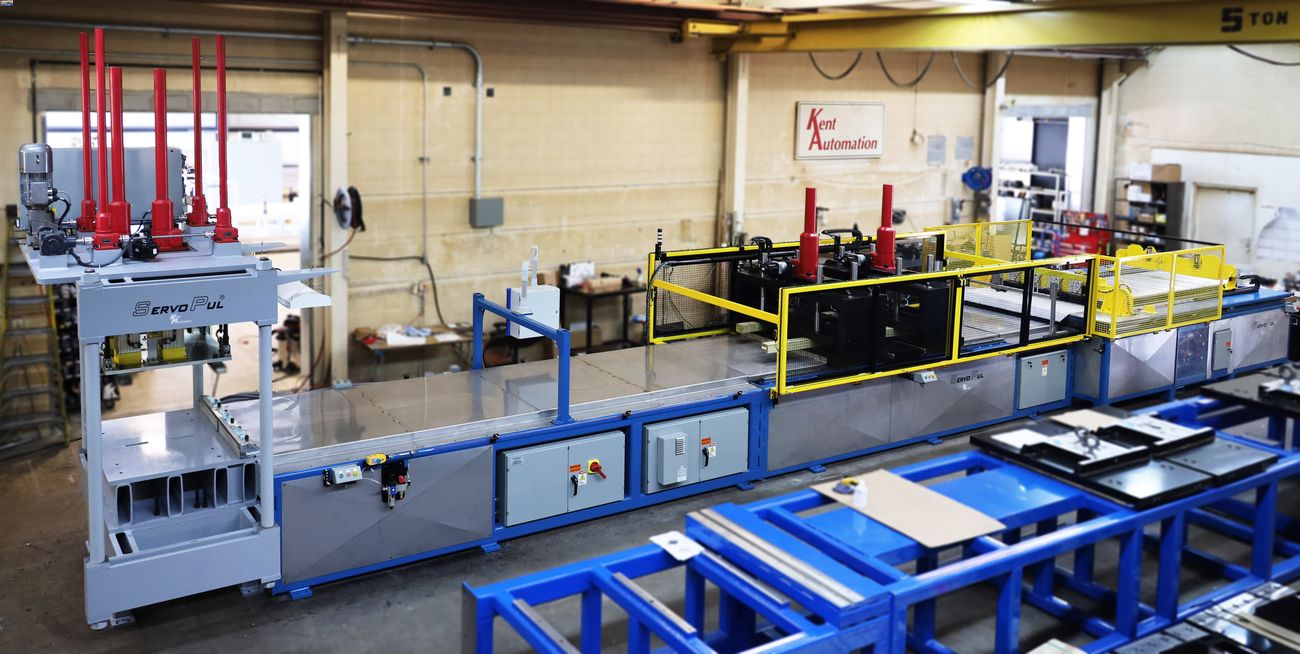
What is a pultrusion machine? A pultrusion machine is a specialized device used in manufacturing to create continuous lengths of composite materials with a constant cross-section. Imagine a machine that pulls fibers like glass or carbon through a resin bath, then shapes and cures them into strong, lightweight profiles. This process is called pultrusion because it involves pulling (not pushing) the material through the die. These machines are essential in producing items like fishing rods, ladder rails, and even parts for wind turbines. They offer high strength, durability, and resistance to corrosion, making them invaluable in various industries.
What is a Pultrusion Machine?
Pultrusion machines are fascinating pieces of equipment used in manufacturing. They create continuous lengths of composite materials with a constant cross-section. Let's dive into some intriguing facts about these machines.
-
Pultrusion machines are primarily used to manufacture composite materials like fiberglass, carbon fiber, and aramid fiber.
-
The term "pultrusion" is a combination of "pull" and "extrusion," highlighting the process of pulling fibers through a resin bath and then through a heated die.
-
Pultrusion machines can produce a variety of profiles, including rods, tubes, beams, and custom shapes.
-
These machines are highly automated, reducing the need for manual labor and increasing production efficiency.
How Pultrusion Machines Work
Understanding the working mechanism of pultrusion machines can be quite enlightening. Here's how they operate:
-
Fibers are pulled from creels, which are racks that hold spools of fiber.
-
The fibers are then guided through a resin bath where they are thoroughly impregnated with resin.
-
After impregnation, the fibers pass through a pre-forming station where they are shaped into the desired profile.
-
The shaped fibers then enter a heated die, which cures the resin and solidifies the composite material.
-
Finally, the cured composite is pulled through a set of puller clamps and cut to the desired length.
Advantages of Pultrusion Machines
Pultrusion machines offer several benefits that make them a popular choice in the manufacturing industry.
-
They produce high-strength, lightweight composite materials.
-
The process is highly efficient, allowing for continuous production with minimal downtime.
-
Pultruded composites have excellent corrosion resistance, making them ideal for harsh environments.
-
These machines can produce complex shapes with consistent quality.
-
Pultrusion is a cost-effective method for producing large quantities of composite materials.
Applications of Pultruded Composites
Pultruded composites find applications in various industries due to their unique properties.
-
They are used in the construction industry for making structural components like beams, columns, and panels.
-
The automotive industry uses pultruded composites for lightweight, high-strength parts.
-
In the aerospace sector, these materials are used for making aircraft components.
-
The electrical industry uses pultruded composites for insulators and other electrical components.
-
Pultruded composites are also used in the marine industry for making boat hulls and other marine structures.
Materials Used in Pultrusion
The choice of materials in pultrusion plays a crucial role in determining the properties of the final product.
-
Fiberglass is the most commonly used fiber due to its high strength and low cost.
-
Carbon fiber is used for applications requiring high stiffness and low weight.
-
Aramid fiber, known for its impact resistance, is used in applications where durability is critical.
-
Polyester resin is commonly used due to its cost-effectiveness and good mechanical properties.
-
Epoxy resin is chosen for applications requiring high strength and resistance to environmental factors.
Challenges in Pultrusion
Despite its advantages, pultrusion also faces some challenges.
-
The initial setup cost for pultrusion machines can be high.
-
The process requires precise control of temperature and speed to ensure consistent quality.
-
Pultruded composites can be brittle, making them susceptible to cracking under certain conditions.
-
The process is limited to producing profiles with a constant cross-section.
-
Handling and storage of raw materials like fibers and resins require careful attention to prevent contamination.
Innovations in Pultrusion Technology
Recent advancements have made pultrusion even more efficient and versatile.
-
Automated control systems have improved the precision and consistency of the pultrusion process.
-
New resin formulations have enhanced the properties of pultruded composites, making them suitable for more demanding applications.
-
Hybrid pultrusion techniques combine different fibers and resins to create composites with tailored properties.
-
Environmental considerations have led to the development of eco-friendly resins and recycling methods for pultruded composites.
The Final Word on Pultrusion Machines
Pultrusion machines are game-changers in manufacturing. They produce strong, lightweight materials used in everything from construction to aerospace. These machines pull fibers through a resin bath, then shape and cure them into solid profiles. This process is efficient, cost-effective, and produces minimal waste.
Understanding how pultrusion machines work can help you appreciate the innovation behind everyday items. From bridges to sporting goods, these machines make it all possible. They offer a sustainable solution for industries looking to reduce their carbon footprint.
If you're in manufacturing or just curious about how things are made, pultrusion machines are worth knowing about. They represent a blend of technology and engineering that pushes the boundaries of what's possible. So next time you see a lightweight, durable product, you might just think of pultrusion machines.
Was this page helpful?
Our commitment to delivering trustworthy and engaging content is at the heart of what we do. Each fact on our site is contributed by real users like you, bringing a wealth of diverse insights and information. To ensure the highest standards of accuracy and reliability, our dedicated editors meticulously review each submission. This process guarantees that the facts we share are not only fascinating but also credible. Trust in our commitment to quality and authenticity as you explore and learn with us.
